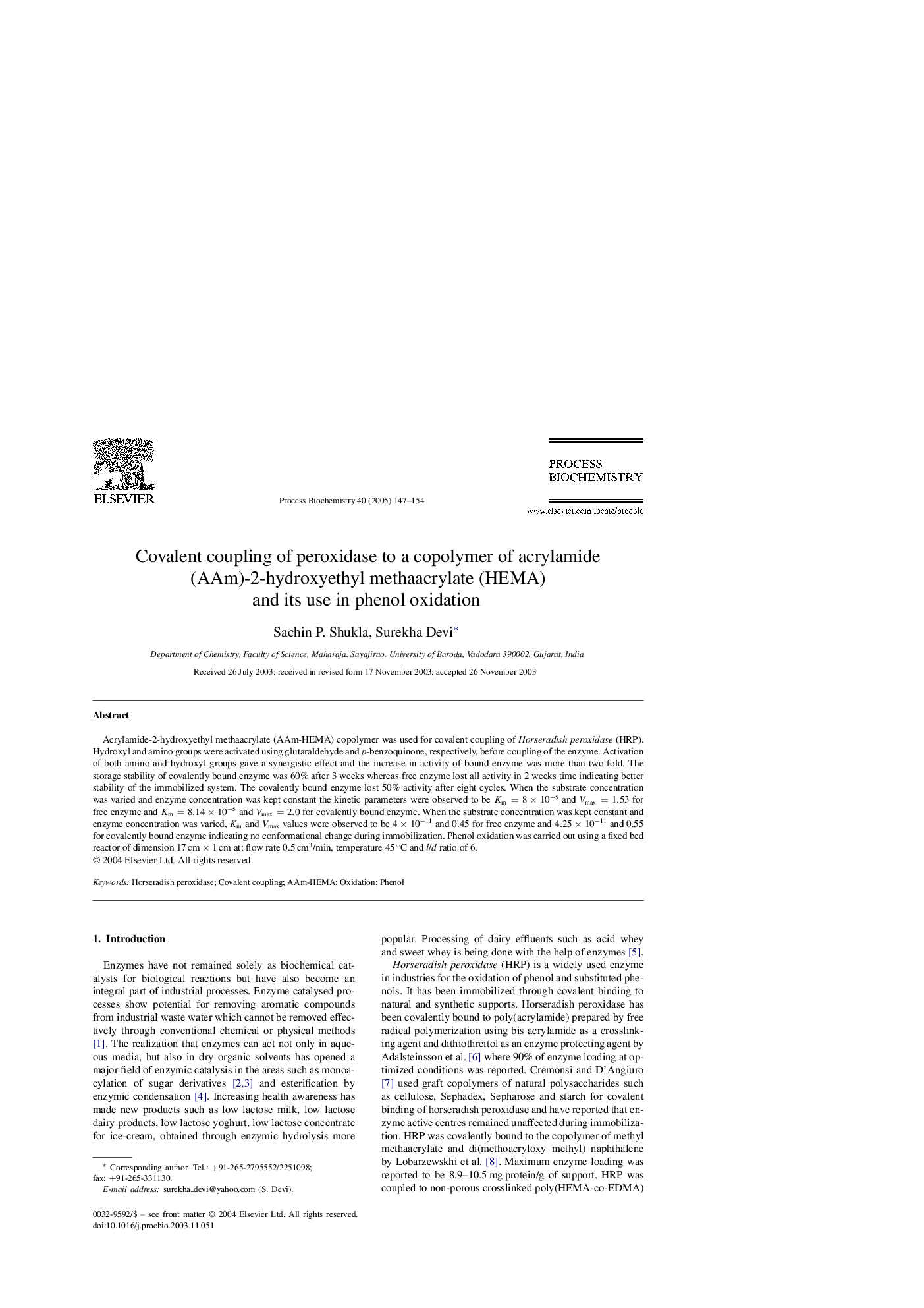| Article ID | Journal | Published Year | Pages | File Type |
|---|---|---|---|---|
| 10236170 | Process Biochemistry | 2005 | 8 Pages |
Abstract
Acrylamide-2-hydroxyethyl methaacrylate (AAm-HEMA) copolymer was used for covalent coupling of Horseradish peroxidase (HRP). Hydroxyl and amino groups were activated using glutaraldehyde and p-benzoquinone, respectively, before coupling of the enzyme. Activation of both amino and hydroxyl groups gave a synergistic effect and the increase in activity of bound enzyme was more than two-fold. The storage stability of covalently bound enzyme was 60% after 3 weeks whereas free enzyme lost all activity in 2 weeks time indicating better stability of the immobilized system. The covalently bound enzyme lost 50% activity after eight cycles. When the substrate concentration was varied and enzyme concentration was kept constant the kinetic parameters were observed to be Km=8Ã10â5 and Vmax=1.53 for free enzyme and Km=8.14Ã10â5 and Vmax=2.0 for covalently bound enzyme. When the substrate concentration was kept constant and enzyme concentration was varied, Km and Vmax values were observed to be 4Ã10â11 and 0.45 for free enzyme and 4.25Ã10â11 and 0.55 for covalently bound enzyme indicating no conformational change during immobilization. Phenol oxidation was carried out using a fixed bed reactor of dimension 17cmÃ1cm at: flow rate 0.5 cm3/min, temperature 45 °C and l/d ratio of 6.
Related Topics
Physical Sciences and Engineering
Chemical Engineering
Bioengineering
Authors
Sachin P. Shukla, Surekha Devi,
